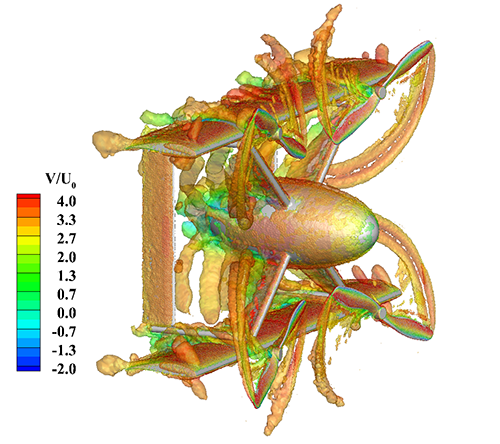Three researchers at the UNT College of Engineering are working to create a reconfigurable unmanned aircraft vehicle that could be 3D printed on-demand and on-site from anywhere in the world as part of an Army research initiative.

Marcus Young in the Department of Materials Science and Engineering is working with shape memory alloys to make it possible for soldiers to change the wing’s shape and aerodynamics. Hamid Sadat in the Department of Mechanical Engineering is developing a multi-physics reduced order model by integrating machine learning and high-fidelity simulations that better depicts how physics behaves for a reconfigurable UAV to better ensure it could adjust both aerodynamically and acoustically for a specific mission.
"We’re adjusting the aerodynamics and acoustics of the CRC drone, which is a mid-size UAV and ranges from about three to 20 pounds in weight," said Sadat. "By running these simulations at a significantly quicker rate and morphing the blades, we’re able to reduce the UAV’s noise when flying and adjust its speed for missions within a matter of hours. It could really be a game changer for the military."
The researchers are working with scientists and engineers from the U.S. Army Combat Capabilities Development Command, known as DEVCOM, Army Research Laboratory.
"UAVs provide disruptive capabilities for multiple Army operations. Vehicle reconfigurability is an effective approach to achieve the next-generation attributes desired for such operations," said Rajneesh Singh, ARL’s lead for the collaborative research. "The research being conducted at UNT will enable UAVs capable of improved performance, agility and quieter operations."
Reducing acoustic noise is a significant aircraft design challenge, which has a major impact on practical deployment of UAVs, especially for stealth military applications. Xinrong Li in the Department of Electrical Engineering is developing and implementing experimental acoustic research platform, taking measurements for UAV noise characterization and testing the practicality of the theoretical model-based simulations and designs for acoustic noise control and reduction.
"The experimental study lets us see the effects of the design in realistic operating conditions and provides valuable insights to refine the designs we’ve created," said Li. "The great thing about this group is that we’re a multidisciplinary team that has really come together to tackle the same challenging topics, but with totally different, yet complementary, approaches and backgrounds. It really emphasizes the importance of collaborative and interdisciplinary research."